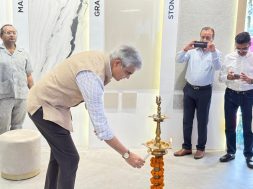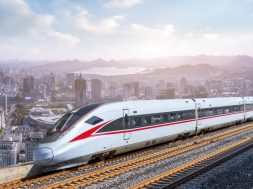“Government and people should stand side-by-side and be equal partners in law enforcement. The government is the duties bound to protect its people and people have the moral responsibility to help their government”-BS Aswathnarayan, VP, Indian Plumbing Association
Sanitation, like education and health, is a fundamental building block in the fight against world poverty. Today, 2.6 billion people – more than 40 per cent of world’s population – lack access to basic sanitation. According to research findings, there are nearly 10,000 deaths due to water related diseases everyday around the globe. With the global community coming even closer with simplified travel and increased communication, the struggle to contain infectious water borne diseases has gone way beyond the nation’s border. Historically, as societies grew in complexity and size, so did the plumbing systems supporting them.
In the past few centuries, with the growth of the industrial revolution and the scientific method, new plumbing methods were formalised into different engineering professions. The World Health Organisation and United Nations Children fund statistics on drinking water and sanitation indicate a sharp acceleration of efforts towards access to types of drinking water and sanitation facilities requiring a considerable level of plumbing.The objective of a public drinking water system is to provide all consumers with a continuous sufficient supply of good quality drinking water at an affordable price in order to ensure the health and well being of those served.
Studies have indicated that improved drinking- water supply reduces diarrhoea morbidity by 6 per cent to 25 per cent, and improved sanitation reduces it by 32 per cent. Hygiene interventions, including education and hand washing can achieve up to 45 per cent reduction of diarrhoea cases.
A drinking water supply system consists of three major elements – Source, Treatment and Distribution to the users:• Ground and Surface source waters are at risk of contaminations from both microbes and chemicals. Chemical contamination occurs sometimes from natural origins (e.g. excess fluoride and arsenic). A water supplier must therefore first understand the composition of its source water and the origin of potential contamination that it could encounter, taking into account seasonal factors.• Unprotected Surface Source water can receive direct contaminant discharges, as well as surface runoff potentially contaminated by human or animal sanitary wastes, agricultural waste or chemicals (e.g. Pesticides runoff and automobile oil from streets).• Washing and defecation in streams will be a major contributor on downstream contamination.• Ground water is often naturally protected by soil overlays. However, some geology is porous and vulnerable to contamination from surface washes, and also from septic tanks and privies.• Unprotected and poorly designed wells and the act of drawing water from open wells can increase the risk of contamination.
Government agencies and engineers need to effectively communicate and work collaboratively to help risk managers determine which environmental hazards are real to help policy makers make the best environmental policy and water management decisions.
The WHO guidelines for drinking water quality provide comprehensive and up-to-date guidance to decision makers by providing consensus recommendations developed by international experts from all of those disciplines.
In addition, with a piped drinking water supply, proper sanitary transport and waste treatment and disposal facilities are important to ensure a safe domestic and community environment. There are costs both in the initial construction and maintenance of these facilities and sustainability requires provision for finance, operation and maintenance.
With ever growing demand of the city and its population, it is practically very difficult to provide water from the source. It’s high time that the governing bodies adopt a methodology of treating sewage generated to acceptable standards and distribute the same through a standalone pipe to meet the flushing requirements of individual dwellings/ complexes. High degree of precision is required to ensure that there is no cross-connection between the drinking water supply and recycled water supply are distinctive in colours identification and there is no cross connection.
Also, Government agencies should collect the excess treated water available with individual private housing complexes, commercial campus for a price and distribute the same to the areas where water supply is inaccessible.
Piping systems and plumbing fixtures should be so designed, maintained and used as to minimise leakage and wastages, leakage can also be avoided by sound installation practices and protection of pipes and fixtures against corrosion and accidental damage.
Wastage can also be minimised by proper education on the need for rational use of drinking water.
For large or complex systems, or where public use or the handling of food for sale is involved, the Public Health (or other) Authority may require periodic inspection and retesting as a condition for approval.A code of practice is intended to ensure the quality and functionality of plumbing systems of the occupants of the premises where a plumbing system is to be installed, as well as the health of the Public in general.
In some instances, the National Code may only cover technical specifications and local authorities may need separate by-laws or regulations to regulate administrative matters for connection to the authority’s water, sewerage or drainage systems.
The primary aims of a Plumbing Code of Practice ensures the following:• Planners, administrators and plumbers develop the required competency so these codes are respected and applied• Standard is set to ensure that plumbing assemblies, materials and technologies are safe and effective• Plumbing installations meet these standards• Plumbing installations are maintained to ensure continuous safety and effectiveness.
The concept of undivided responsibility for enforcing the code of practice is particularly important since there may be numerous authorities that have specific roles and requirements linked to plumbing systems. They may include water and sewerage authorities, health departments, building (including plumbing) code officials, food & drug officials, and bodies that deal with environment, tourism, housing, industry and transportation. Plumbing Codes of Practices should address the unique requirements of each of these different bodies so that a building owner, builder or Plumber need only deal with a single authority.
The farsighted vision of a Uniform Plumbing Code at a global level has taken a group of dedicated plumbing professionals almost 75 years of relentless effort to bring to a respectable form and shape. Following their footsteps, bodies of top plumbing professionals in India are working towards adopting a broad framework suitable to Indian conditions. In this context, it is the responsibility of the local governing agencies to adopt the same at the state /central levels.
To summarise, the following steps can be initiated by the governing authority in order to meet the ever-growing demand of clean & safe water:• Adopting the Plumbing Codes (UPC-I) to ensure effective Plumbing technologies and practices to conserve water, as even waste water, has value• Where potable water is scarce, a parallel-recycled water line is catered to meet the demands of flushing, irrigation & air-conditioning• To ensure that the storm water drains are designed effectively within each campus and the run-off is recycled for various requirements, thereby reducing the load on municipal storm water drain. Also, the municipal drains should be maintained periodically for removing silt / debris carried away during the storm• Design an effective system for collecting municipal garbage and identifying land fill areas to dispose the same as the garbage lying on road sides is most vulnerable area for many pathogens• Educating the public about personal hygiene, minimise wastage of water and build a sense of communal ownership and pride of possession so that co-operation is voluntarily given.
In conclusion, the government and people should stand side-by-side and be equal partners in law enforcement. The government has the duties to protect its people and people have the moral duties to help their government. Without good coordination between both of them, any rule, law, or standard will be ineffective in making a world a better place to live.n
BS Aswathnarayan, Vice President, Indian Plumbing AssociationBS Aswathnarayan is one of the Founder Members and current Vice President of the Indian Plumbing Association (IPA) established in 1993. Mr. Narayan joined as Principal Consultant to Potential Service Consultants (P) Ltd., Bangalore in 1989, a Professional Engineering Consultancy Organisation Founded in 1987 to provide quality and timely services. Potential has carried out a number of mega projects for various institutions and clients in India & abroad. Currently he is the Principal Consultant of Maple Service Consultants, Bangalore.
Mr. Narayan is a fellow member of Chartered Institute of Plumbing and Heating Engineers UK and Life Member of Association of Consulting Civil Engineers, Member of Institute of Engineers, Affiliate Member of World Plumbing Council and Chairman, Convener of NBC – Part 9 and IPA Technical Committee. In 2007 he was awarded life time achievement award by IPA.
Cookie Consent
We use cookies to personalize your experience. By continuing to visit this website you agree to our Terms & Conditions, Privacy Policy and Cookie Policy.









